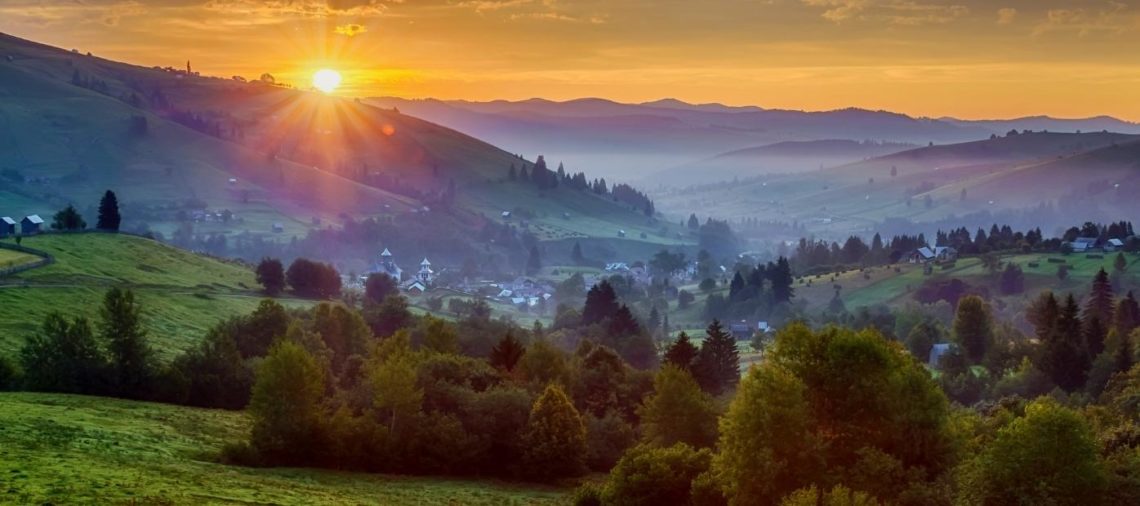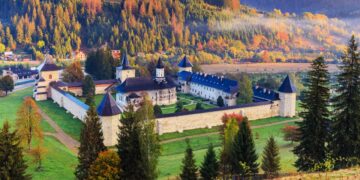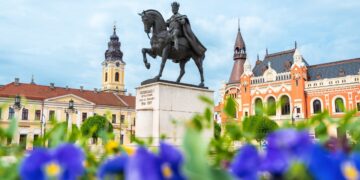A holiday in the region of Bucovina will leave you feeling that Romania is such a beautiful country that could live very well from tourism. Indeed, before planning some days in the north of the Moldova region, you will wonder what the most interesting places and objectives you should see are.
Of course, between these, the famous monasteries are first. But they are not the only points of interest of an area where nature and landscapes will delight you, perhaps more than anything. TukTuk offers below 13 places (verified) where you must stop on a journey in Bucovina. The order is random, but everyone can visit some route. With the mention that the roads are excellent, so your car will be safe.
1 Putna Monastery

Putna is the first monastery founded by the ruler Stefan cel Mare, being also the place where it rests with his family. Its construction began in 1466, ended in 1469, and was consecrated in 1470, after the victory in the fight of Lipinti, against the Tatars. The works were finished by the Greek architect Teodor, and the fortifications were done a little later, in 1481. After a fire and devastation made by the Cossacks army of Timus Hmelnitchi, the monastery was practically restored by Vasile Lupu between 1653-1662.
Putna is one of the most beautiful and imposing monasteries in the country, both its architecture and the natural setting in which it is placed, bringing it to the top of the favorites of those passionate about religious tourism.
We like: the perfect architecture of the church fortifications.
Location: 30 km NV de Radauti, on DN 2H
2 The cell of Daniil the Hermit
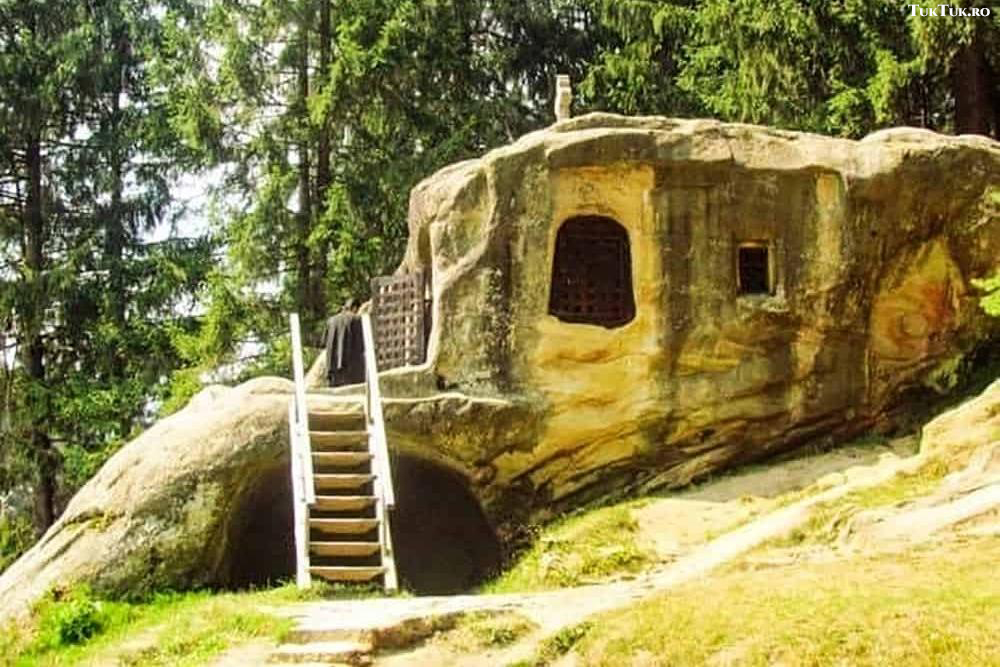
Daniil’s Cell Hermit is one of the main sights of the village of Putna. You can not get to Putna and not go to the cell of Daniil the Hermit, about which the Romanians heard for the first time in school, after reading the poem of Dimitrie Bolintineanu:
Under a barren ravine, on a foaming river, where a hermit fled the world, a stranger arrived with the shadows of the evening.
- Stefan of Moldova wants to talk to you!
- Stefan of Moldavia, Daniel says, wait outside! I’m in prayer.
- Good father! I’m hurt and defeated; my mother rejected me today! I come to ask for your advice if it’s better to surrender Moldova to the Turks.
Monk Daniil chose in a moment of life to withdraw on the river bank Viteul, in now-a-day Putna village, to lead a life dedicated to the Lord, in hermitage, for 20 years. He found here a rock in which he patiently carved a small room, a chapel, then visited by many believers who came to ask for his advice and be delivered from suffering. After his death (not known the year), Daniil was buried in the pronaos monastery Voronet. At Putna monastery, you can see some of his relics: a silver finger embellished with 11 pearls and a garnet.
Do not expect to find more than a cell, where you will meet a monk who prays. But its location is spectacular, and the surroundings call for spiritual peace and total relaxation.
We like: the monk’s idea to dig in the rock — room of a maximum 10 meters long.
Location: in the village of Putna, on a side road (there is a sign), about 500 meters after crossing over a damaged bridge (you can drive).
Also check this itinerary for two weeks of a Romania road trip.
3 Arbore Church
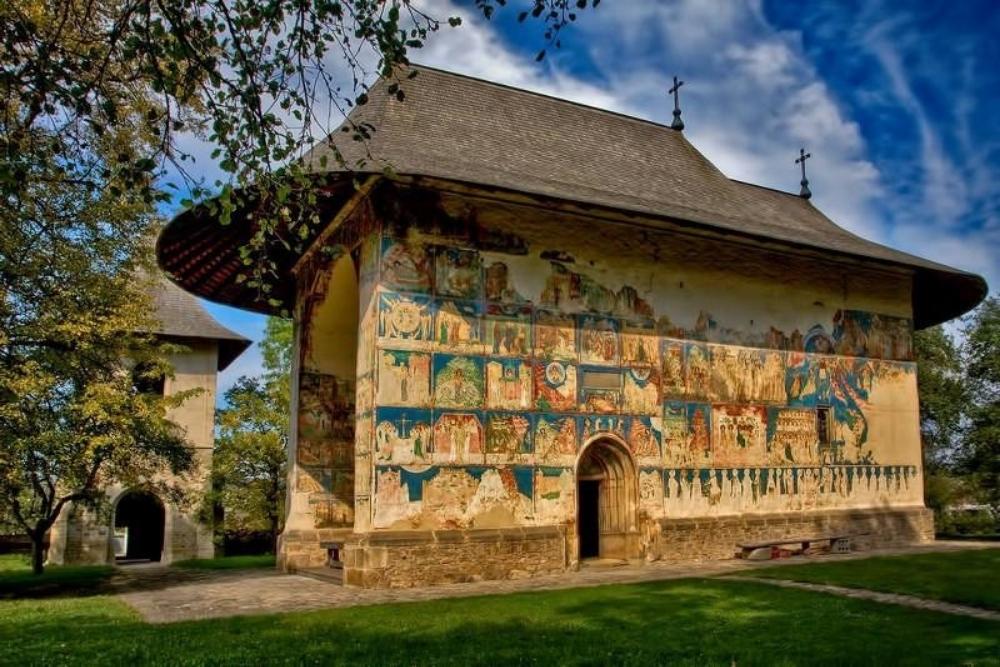
Buillt in year 1503 by the hetman Luca Arbore, the Arbore Church is, in our opinion, a Bucovina church that deserves a better fate nowadays. And that’s because it is located on the tourist map of the Bucovina places of worship as one of the most important. But the feeling when you pass the gate is that the site is completely disconnected. The surroundings are unattended, crosses left in decay, grass growing everywhere, and, in the monastery, a guy unable to connect two words, but who quickly charge a 5 lei fee for entering the unique room in a so-called renovation. There is an urgent need for reconditioning the Arbore Church, otherwise a beautiful edifice with unique exterior paintings, which are also in an advanced stage of degradation.
The church is dedicated to the Cutting of the Head of St. John the Baptist. Luca Arbore’s grave (and his wife, Iuliana, is in the narthex).
We like: the bell tower, built from stone.
Location: on DN2K, between Milisauti and Solca.
4 Cacica salt mine
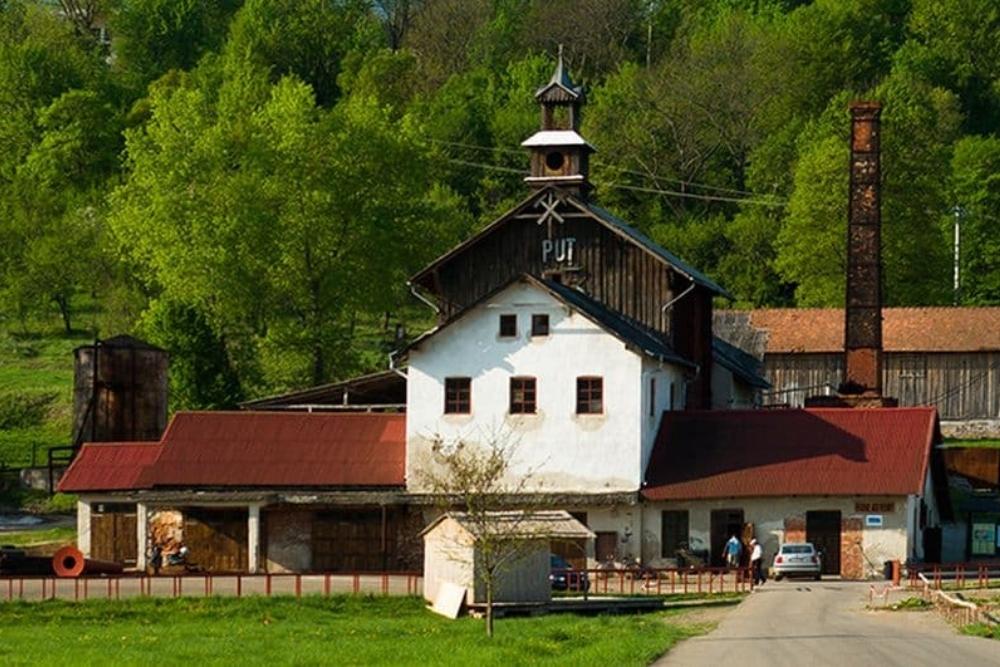
Take a break from the Bucovina monasteries to breathe the salty air, mixed with the lampante oil, inside the mine of Cacica. A salt mine different from those you probably got acquainted with in Slanic-Prahova, Turda, or other parts of Romania. Because we are talking about a mine whose construction began in 1791, where Polish specialists worked in the following years.
The mine entrance is made of some wooden steps, 200 years old (I count them, there are about 200, so, attention!, those who suffer from the heart may have trouble returning, because there is no elevator). Walking the galleries until reaching the vast spaces could be a nightmare for claustrophobes, but the charm of walking is undeniable. In the mine, you can visit the ballroom, the gym (where you can play football or basketball) or the small carved church, located at a depth of 27 meters.
If you intend to visit the mine, do not forget to take a coat, because the temperature in the deep is about 10 degrees. We didn’t like the external aspect, 19th century look-alike, but maybe all should have a sense, in the historical context.
We like: the football field at the depth of 37 meters.
Location: 17 km N from Gura Humorului, on DN 12E. Watch out for signs that are misleading at the intersection from Gura Humorului. One will be left to the mine, the other to the right, to the salt mine. The one on the right is entirely wrong, so… take it left!
5 Voronet Monastery
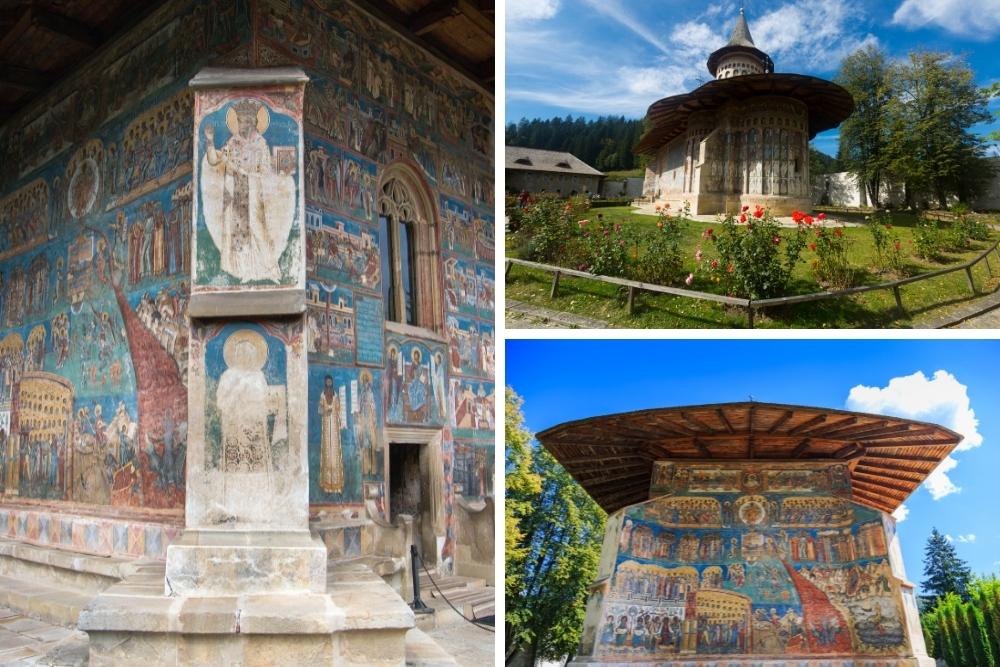
Built by ruler Stefan cel Mare in 1488, Voronet Monastery is probably the most famous one in Romania. That’s because of the famous “Voronet Blue,” the unique color the walls are painted in. Legend says that Stefan founded the monastery after a visit to the monk Daniil the Hermit, who told him not to hand over the country to the Turks and, if you succeed in fighting them, to erect a monastery in the name of St. George. Maybe that’s why Voronet was one of the beloved monasteries of the Moldavian leader and his descendants. Today, the monastery is part of the UNESCO heritage.
The exterior paintings (made by theologian Grigore Rosca) are fabulous: unique, brilliant compositions, themes of significant impact, original and inspired, including the traditions of places (for example, there are Moldovan musical instruments, such as the cobza or the bucium). The Voronet blue, a color that makes part of the special Bucovina chromatics (along with other colors like Humor white, ochre, yellow, rust, etc.), has kept the mystery of the composition for about 500 years.
The vivid shade, which in the sun beat, shines incredibly long after its application, became famous. And one of the explanations-legend for which this color is unique would be that the painters of the church were provided with huge amounts of brandy, only to work harder and harder. Since they could not consume the entire quantity of booze, it is said that the mix of their colors hasn’t been a total stranger to the “artistic” qualities of the plums.
We like: the murals.
Location: Voronet village, in Gura Humorului, (about 5 km from DN)
6 Humor Monastery
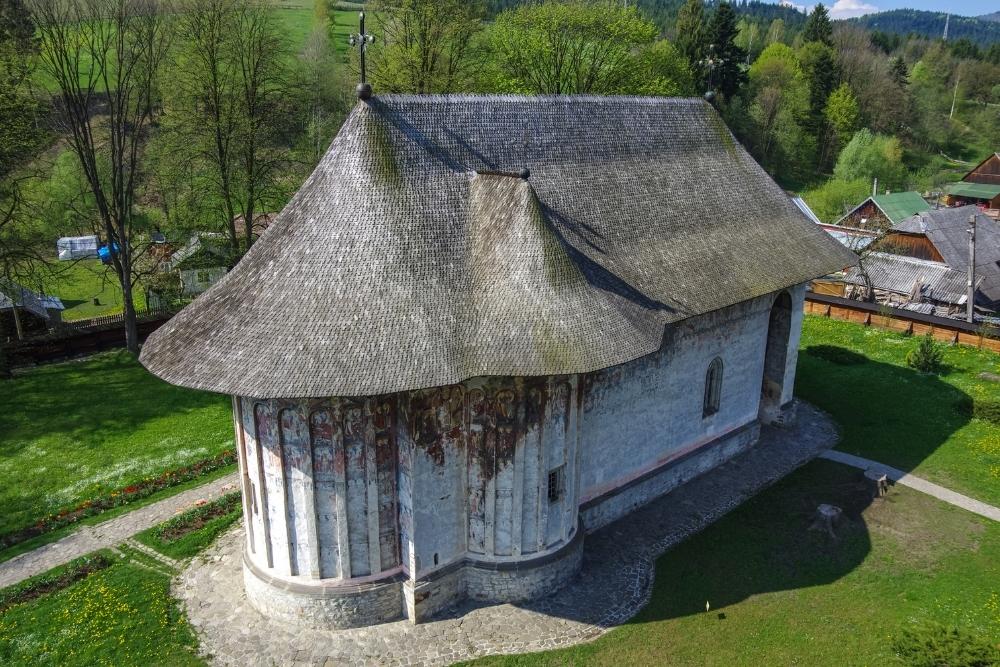
Chancellor Toader Bubuiog is “guilty” of building Humor Monastery in 1530, therefore the foundation is somehow private because Bubuiog was not a leader. Dedicated to the Assumption, Humor was fortified in 1641 by Vasile Lupu, who built the surrounding walls.
The church has painted exterior walls, and the frescoes inside are made in the same style of other monasteries of Bucovina, such as Voronet, Arbore, Moldovita, or Sucevita.
We like: the tower of Vasile Lupu, located in the northeast of the enclosure, which is not part of the fortification.
Location: on DJ 177, 5 km north of Gura Humorului town.
7 The Egg Museum, in Vama
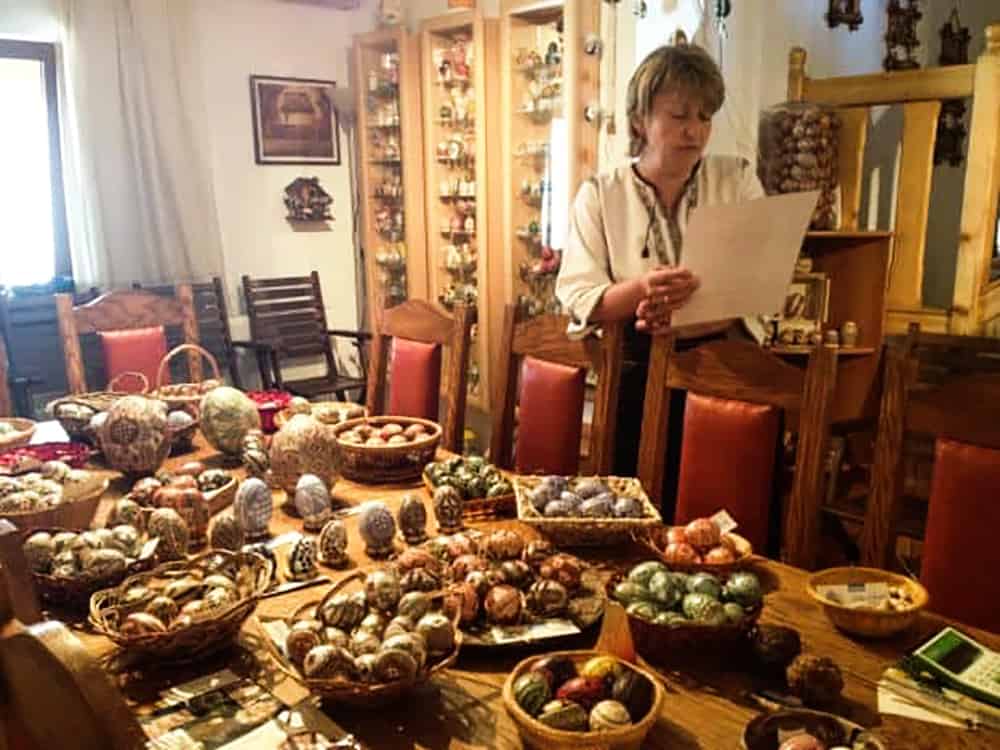
Do not pass through Bucovina without stopping at the Egg Museum in Vama, a private museum belonging to Letitia Orsivschi, professor of textile and decorative art! You will live an extraordinary experience guided by a traditional artist in the magical world of an object about the famous sculptor Constantin Brancusi once said: “is the mother of all forms”: the egg.
Letitia Orsivschi gathered in the two rooms of the museum over 3000 eggs in a fantastic collection. Eggs from all over the world, from all the continents, embellished, surrounded… eggs of all kinds, from the smallest to the gigantic ostrich eggs.
Some eggs are 50 years old and belong to the family collection. All of them are endorsing a local craft that lasts for centuries and induces a strong symbolism, religious or secular, depending on the model chosen for decoration. At the end of the visit, you can buy decorated eggs – the perfect souvenir from a visit to Bucovina.
We like: everything, especially the perforated eggs from the Czech Republic.
Location: Str. Garii, no. 20, Vama village, located on E85, between Gura Humorului and Campulung Moldovenesc.
8 Moldovita Monastery
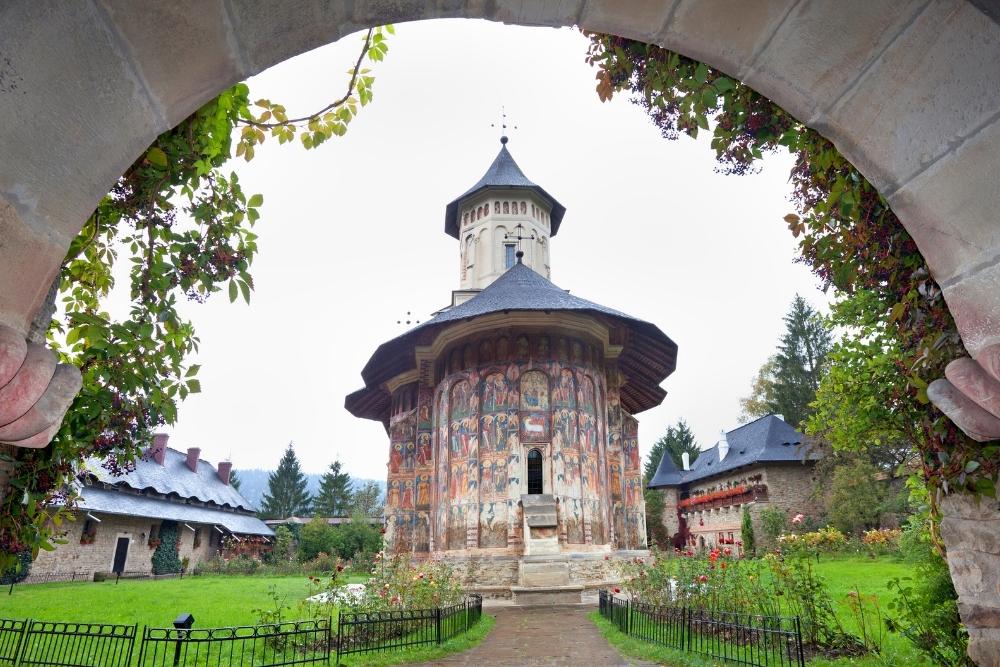
Moldovita Monastery was built in 1532 by Petru Rares, son of ruler Stefan cel Mare, and was painted in 1537, both inside and outside. The fresco on the southern wall is very well preserved. The monastery is chic and beautiful, the church’s proximity to the monks’ rooms, with plenty of flowers, giving a special touch. In the inner courtyard, there is also a statue of Petru Rares. I noticed from the very beginning that the nuns living here are excellent guides for the groups of foreign tourists – a perfect note in the touristic context.
We like: the active presence of the nuns
Location: DJ176, which derives from DN17A, 27 km north of Campulung Moldovenesc.
9 Sucevita Monastery
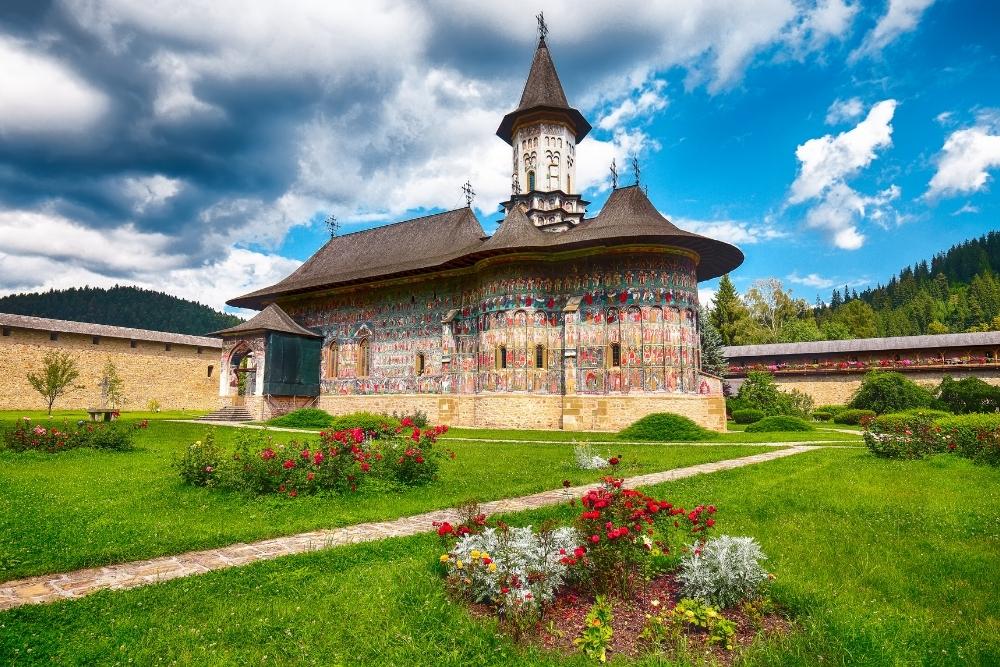
You can’t see Moldovita without seeing his nearby “sister”. Sucevita is a monastery about 50 years younger, built in 1583 by Irimia, Simion, and Gheorghe Movila. The first one became ruler of Moldova shortly after erecting the monastic edifice.
It is one of the last churches painted on the outside; it is part of the UNESCO patrimony, it is imposing and elegant and brings magic in the visitor’s eyes with a specific color, not so famous as the blue Voronet, but also very delightful: green, the symbol of the Holy Spirit.
We like: the wall paintings
Location: on DN17 A, 19 km SV from Radauti.
10 Fortress of Suceava
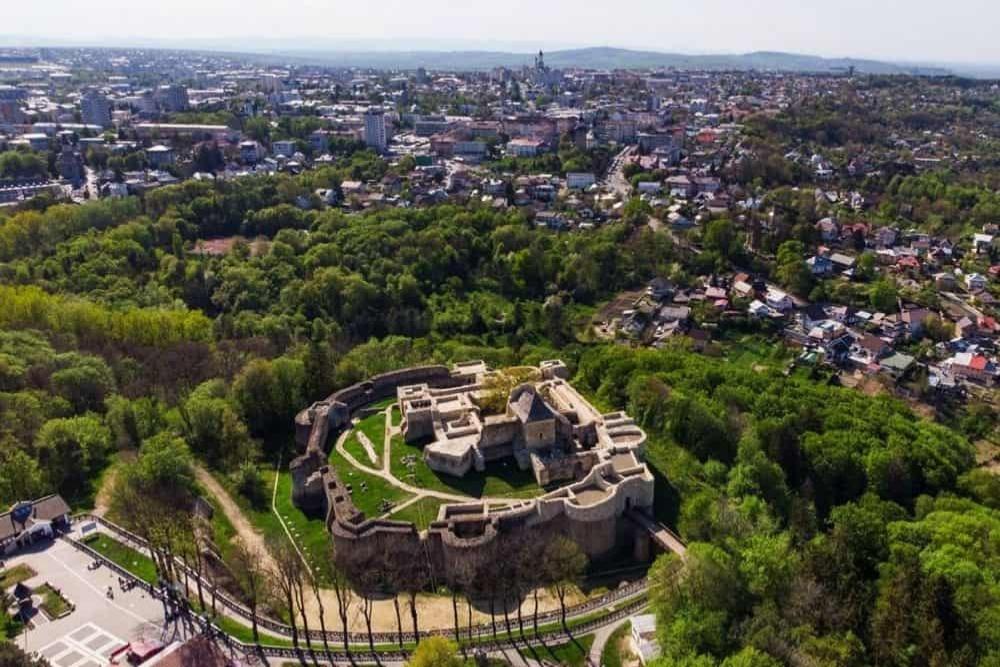
In 2012, the Fortress of Suceava entered an extensive restoration process, and the medieval architectural ensemble, consisting of the castle and defense walls, was consolidated and completed in a vast project with financing in 2011-2015, rendering an imposing legendary image.
So, you can admire an excellently built fortress, to which they have contributed over the years, Petru I Musat (he was the one who raised it in 1375), Stefan cel Mare, Alexandru cel Bun, Vasile Lupu, Jeremiah Movila, and other Moldavian leaders – the result being a fortress extremely hard to conquer. Damaged (especially in 1497, after the attack of the Polish John Albert), exposed to a significant earthquake (during the time of Duca Voda – 1678-1683), ruined, the fortress went into oblivion until the beginning of the twentieth century when the Austrian architect Karl A. Romstorfer refurbished this historic building.
We like: the prison
Location: in Suceava, Cetatii Street.
11 Bucovina Village Museum
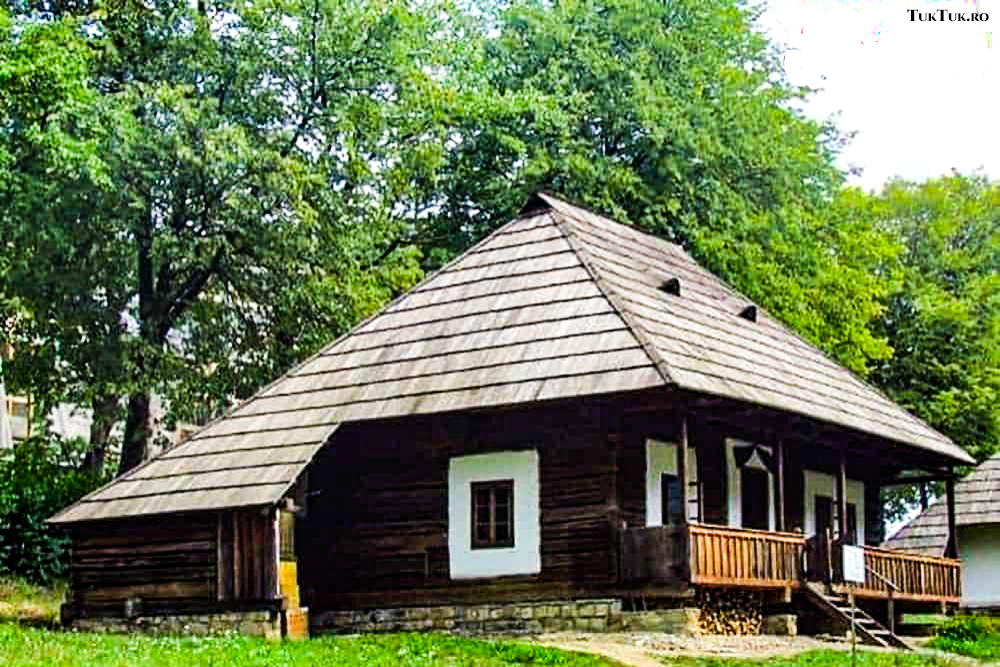
Located nearby the Suceava Fortress, Bucovina Village Museum is an open-air museum. A true delight of the spirit, where you will find traditional architectural landmarks from the north of Moldova. Basically, you enter a village in Bucovina, where you will admire, both outside and inside, various types of houses and households of the area, with their annexes, with the village hearth, with church and bell tower, with the abbot, with traditional technical installations, with specific workshops (pottery, smithy, weaving, etc.).
Very interesting is the internal organization of the houses, which perfectly plays the way people live in the rural parts of this area, from furniture to ovens, from textiles to folk costumes. In addition, you can act on the rituals practiced in the Bucovina region: from baptism to burial.
Bref, a lovely excursion in the world of Bucovina’s village and a tourist attraction you are not allowed to miss when you are on the roads of this region.
We like: the multimedia effects inside the traditional houses
Location: in Suceava, near the Fortress
12 Dragomirna Monastery
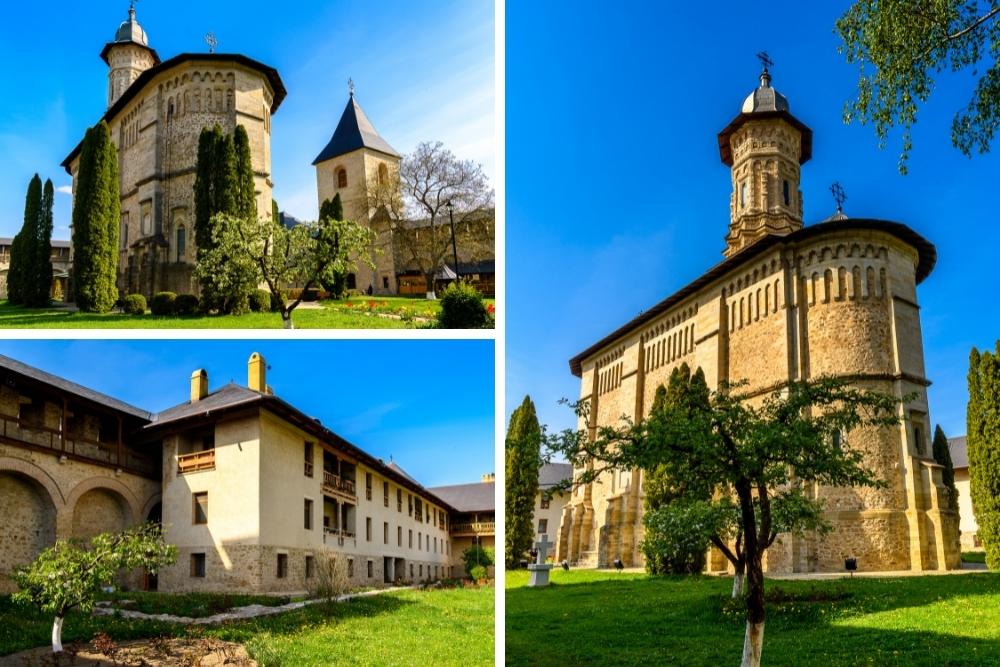
Built by Bishop Anastasie Crimca, in 1609, the Dragomirna monastery is somehow different from the other monasteries in Bucovina, being obvious the early influences of the 15th century. First of all, the monastery is very large; it is much “airy,” and the fortification walls give an excellent appearance. On the other hand, the inner space of the church is very tight, and the walls are not painted but decorated with engravings.
You can climb on the walls surrounding the monastery and admire from the heights the interior court where the nuns perform activities. Dragomirna is placed in a tranquil area and exudes a contagious peace of mind.
We like: the surrounding walls, which are 11 meters high
Location: in the village of Mitocul Dragomirnei, 15 km north of Suceava, on DN29A.
13 Vatra Dornei town
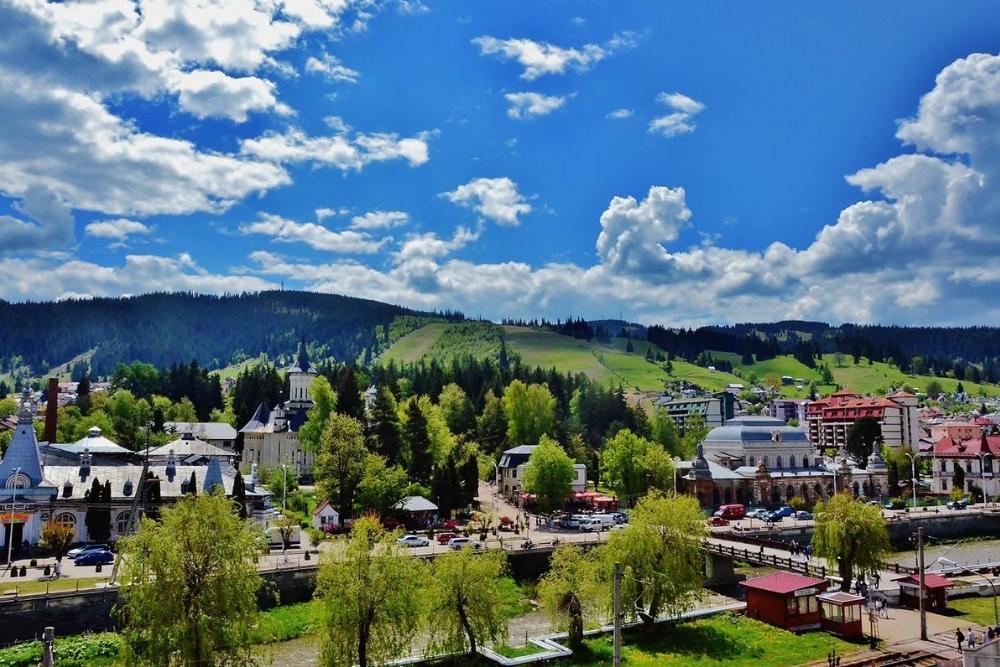
Vatra Dornei, or the Pearl of Bucovina, located in a beautiful area, should not be avoided in a trip in the region. We did not spend a lot of time in this beautiful city, but we had the time to walk in Central Park (known for the Mariana squirrels), where we admired the Japanese Pavilion, the Holy Trinity Church, and the mysterious. We also climbed with the chairlift at 1400 meters elevation, from where we admired the scenery in which the Giumalau Mountain is king.
We like: the Central Park
Location: on E85.
You may also like: Top 10 most beautiful castles in Romania

